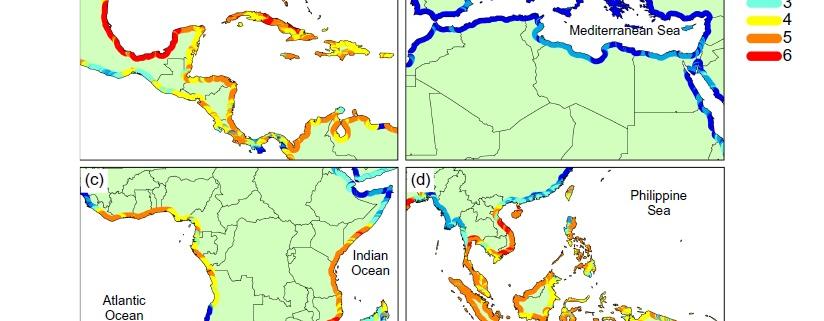Climate change influences sea turtle nesting
by Becca Shelton, RJD Intern
In David A Pike’s scientific paper Climate influences the global distribution of sea turtle nesting, Pike takes an in-depth look at which factors contribute to sea turtle nesting sites. There are 7 extant species of marine turtles that inhabit mainly tropical and subtropical waters and globally, are all considered to be endangered or threatened. Nesting site issues, whether they are abiotic or anthropogenic, appear to be a large contributor to sea turtle population decline. While there have been many studies on sea turtle nesting sites and conservation efforts to protect these areas, Pike’s study focuses more on the variables that attribute to the distribution of the ideal beaches for nesting and how future climate changes may affect them.
In previous studies, it has been shown that precipitation and temperature are the two major contributing factors in creating acceptable sea turtle nesting sites. Because the sea turtle eggshells are flexible, excessive moisture will deprive the developing embryo of oxygen, making high precipitation a limiting factor. Temperature is an interesting aspect because not only can it determine the sex of the turtle but outside of its 25-35ºC range, development will stop, which can lead to mortality, making temperature another limiting factor. Using various modeling programs including MaxEnt and ENMTools, Pike incorporated nine independent predictor variables to create optimal nesting areas and then crossed those areas with already known nest sites. While each species of turtle has different optimal nest conditions, there are still vast areas over overlapping habitat which makes protecting those sites even more critical (Figure 1).

Figure 1. Four global regions and their corresponding number of sea turtle species that nest along their shores. The numbers of species in an area range from 1-6 with comparable color markers.
Pike concludes that “ultimately, the terrestrial environment is a critical, limiting factor for successful sea turtle reproduction due to the limited area in which suitable environmental conditions occur for nesting.” The next step in the conservation of sea turtle nesting sites will be to predict how climate change will alter the distribution of the nests. Some species are more tolerant to fluctuations in temperature than others. To adapt to increasing temperatures, larger species of sea turtles might alter behaviors such as digging a deeper hole to keep the eggs cooler. Genetic variances and changes could influence the adaptive potential of different populations and could lead to new areas being used for nesting. This information is vital for research and conservation because of the already bleak state of sea turtle populations. As scientists and conservationists, it is important to look at the complexity of nesting conditions to preserve current sites and preserve future ones so that we can enjoy sea turtles in our oceans for years to come.
REFERENCES
Pike, David. 2013. Climate influences the global distribution of sea turtle nesting. Global Ecology and Biogeography




Leave a Reply
Want to join the discussion?Feel free to contribute!